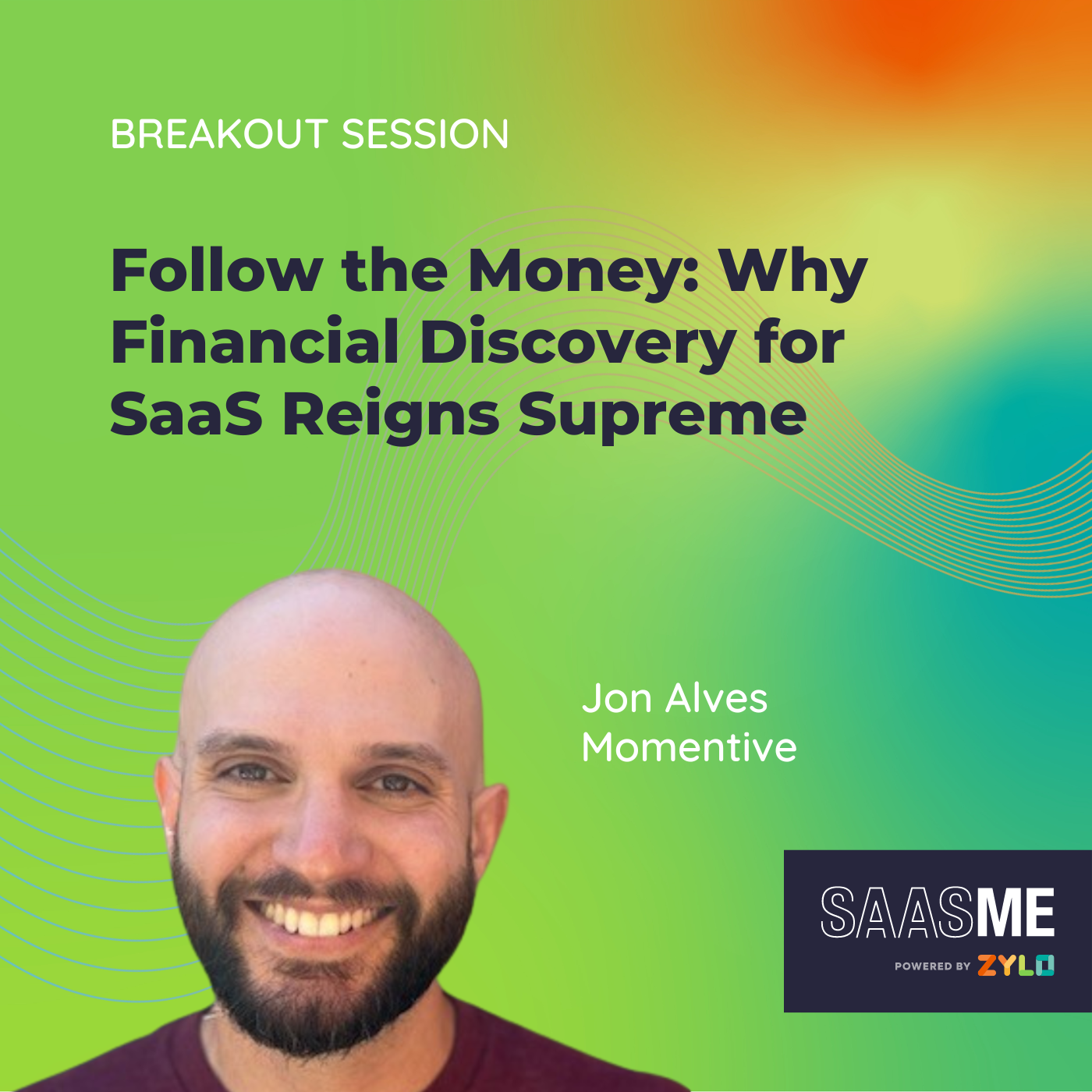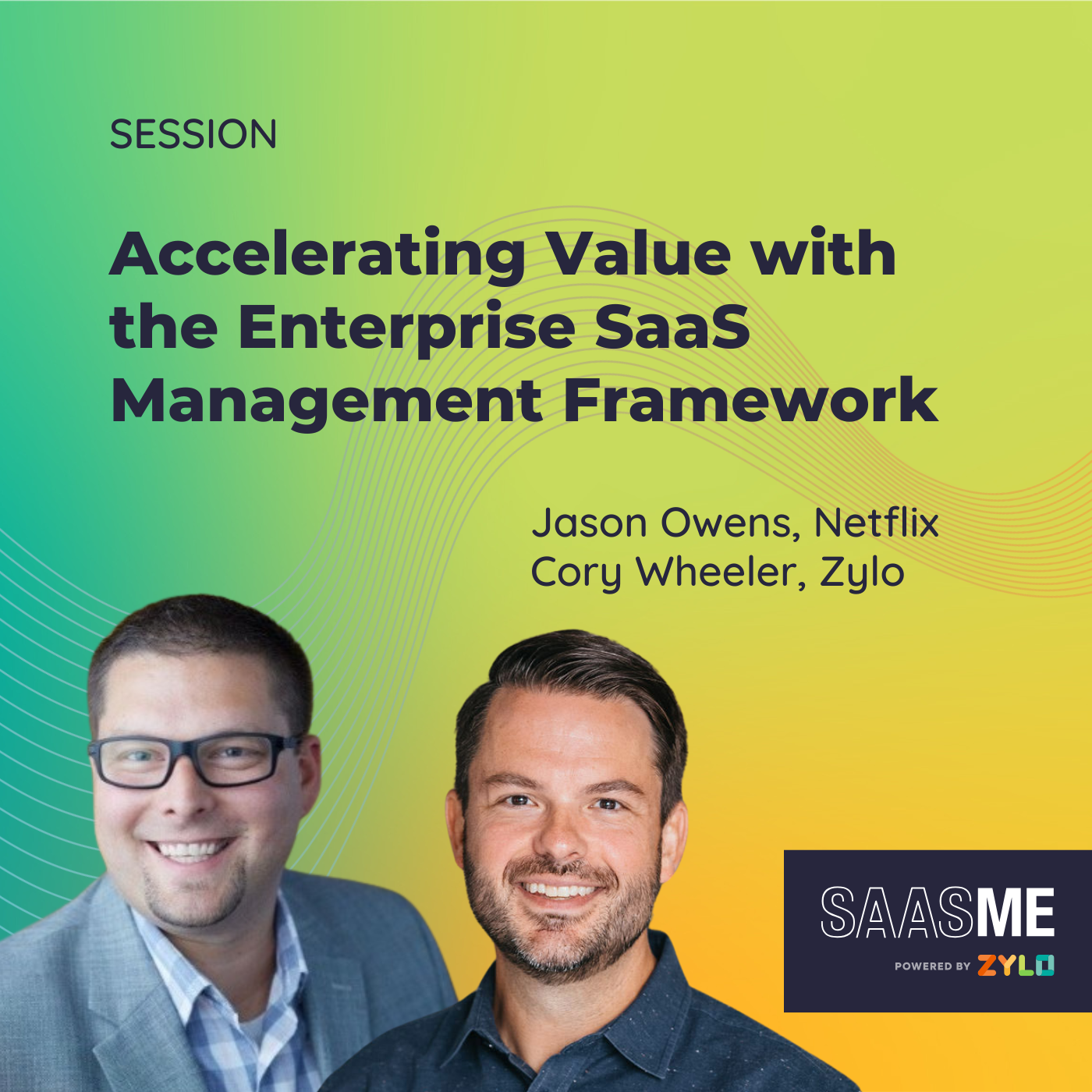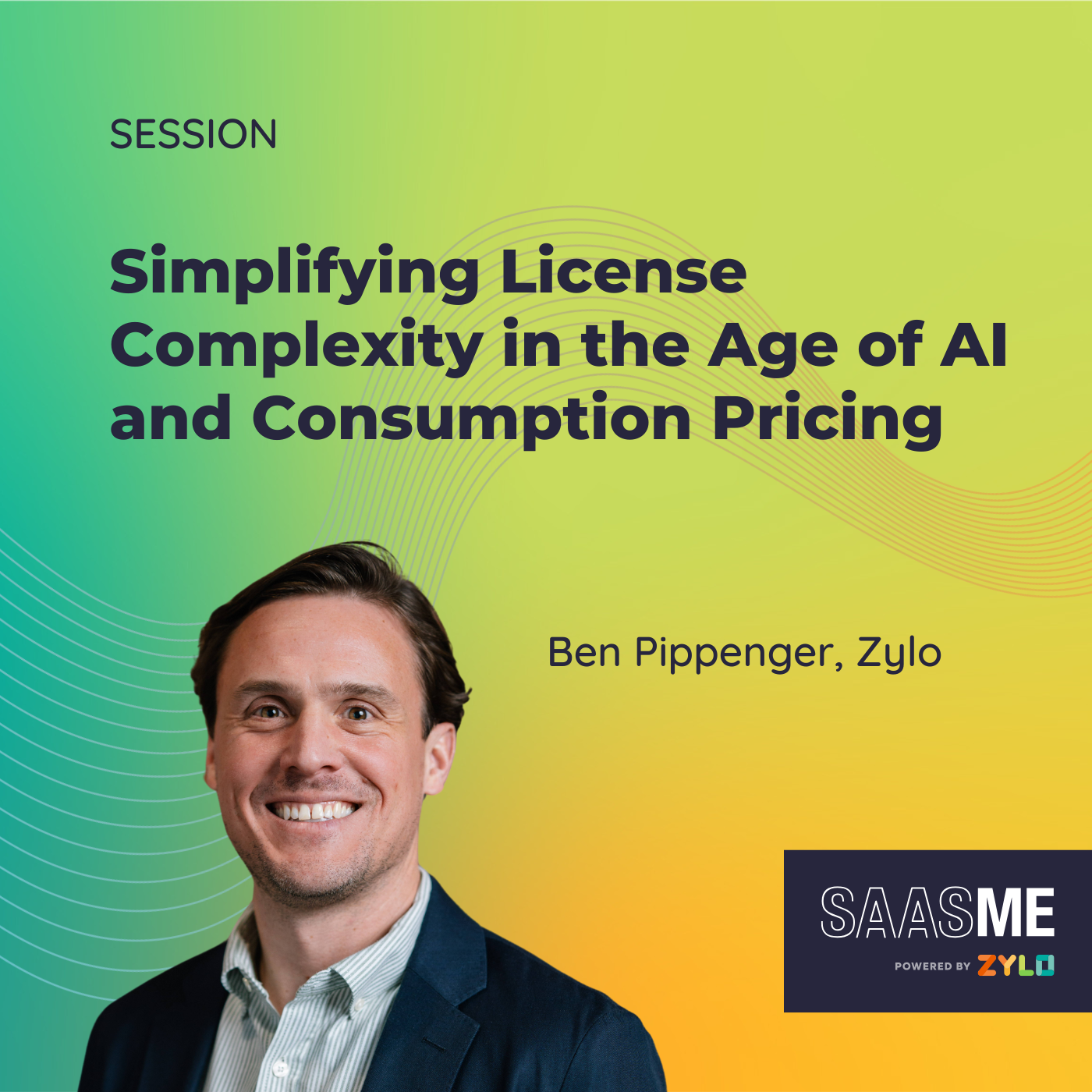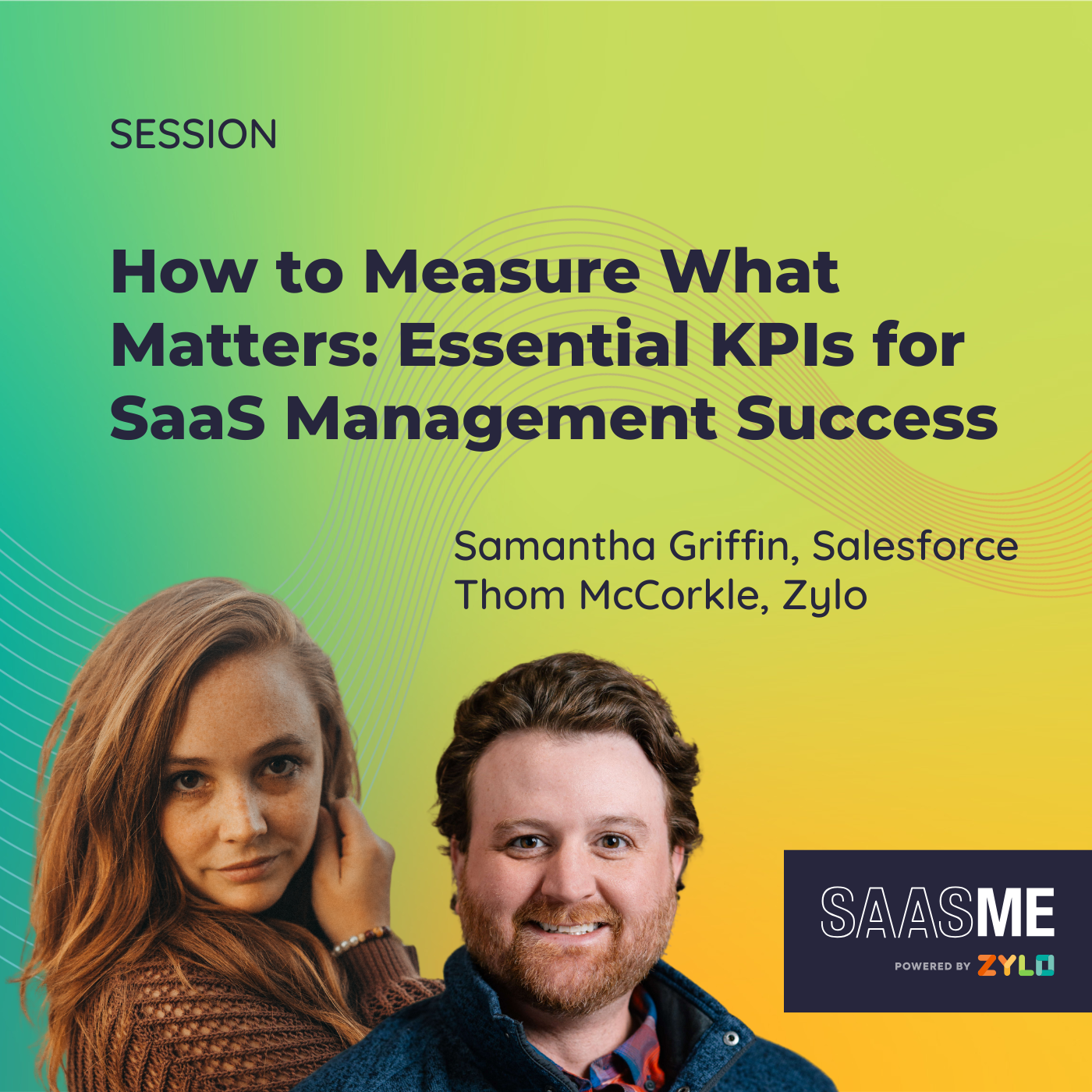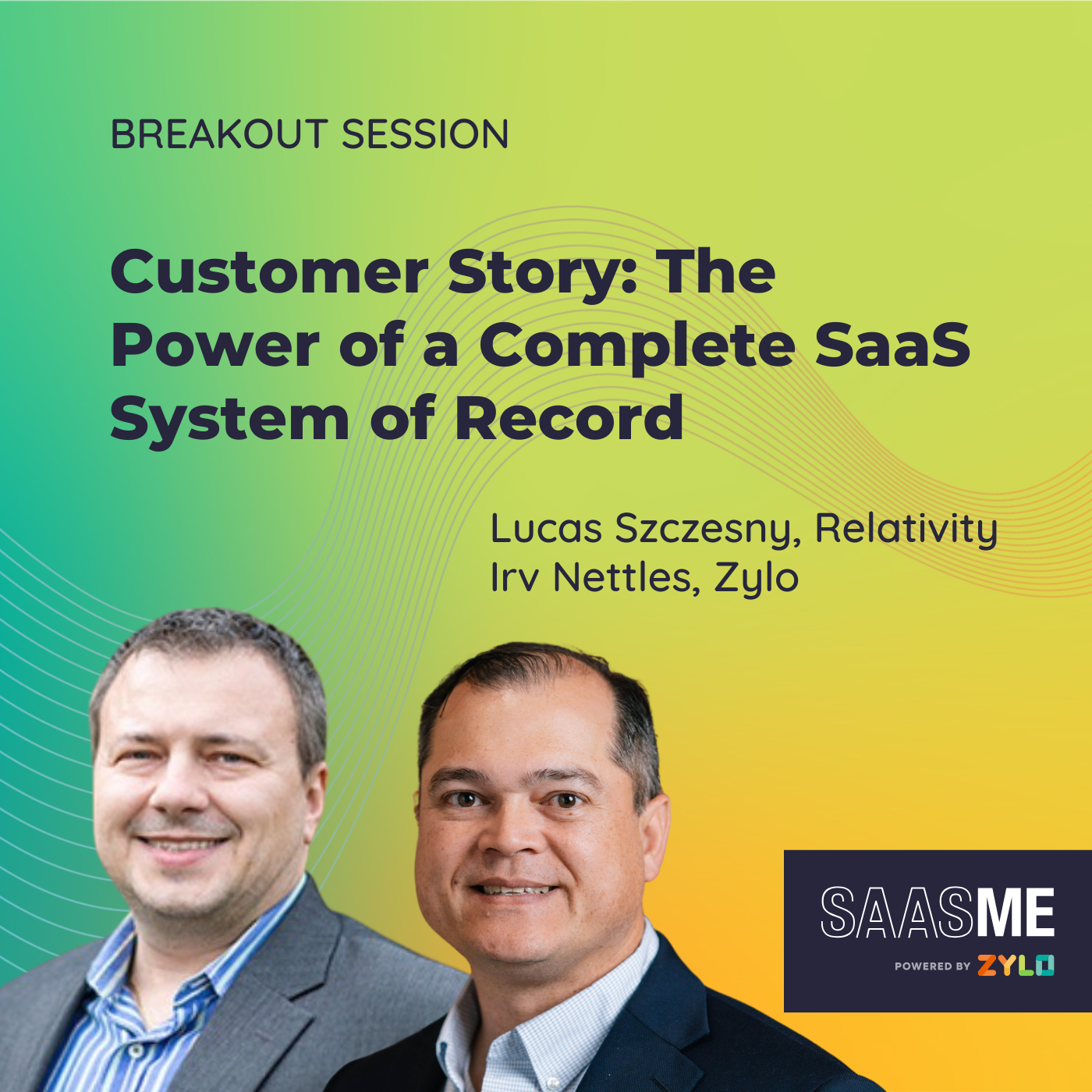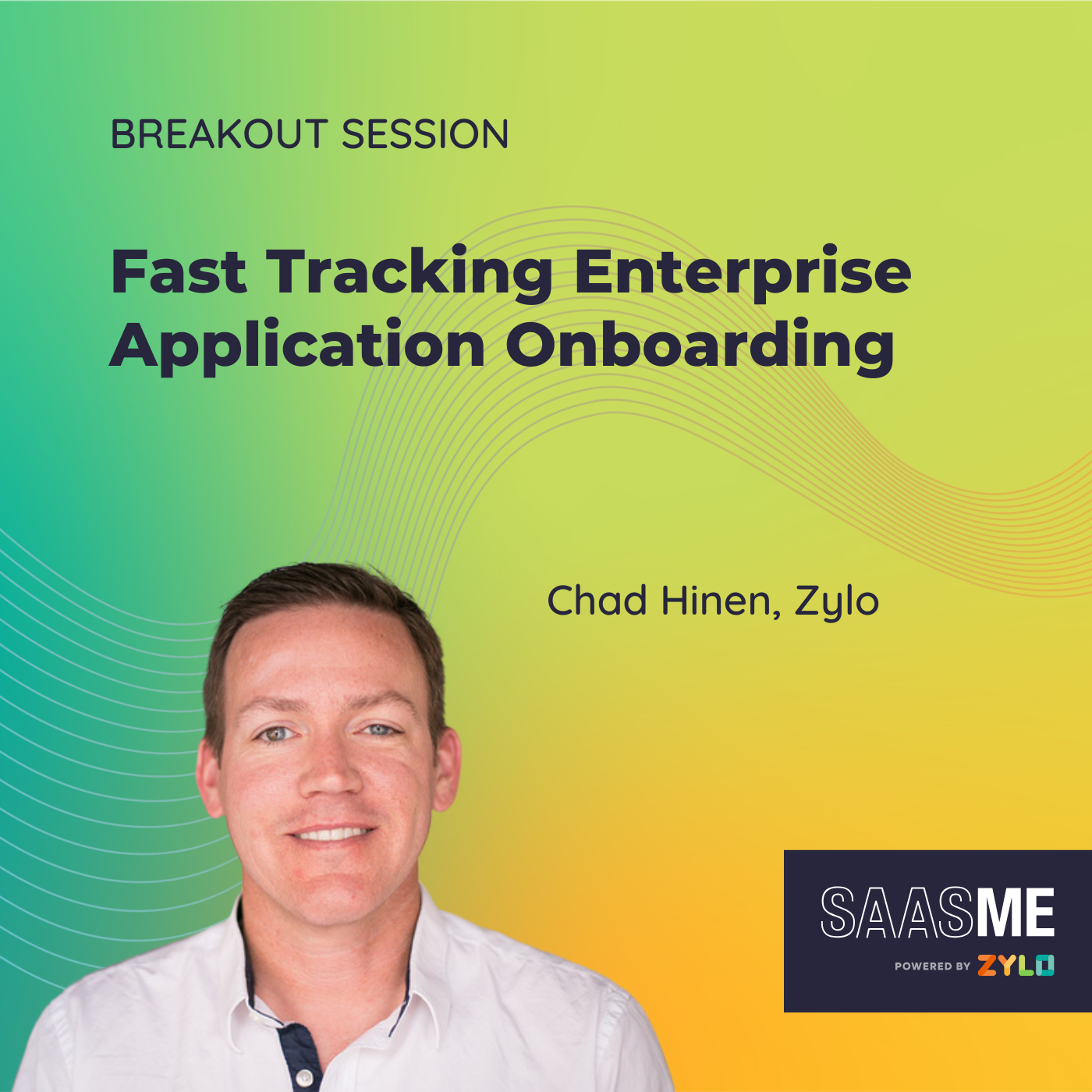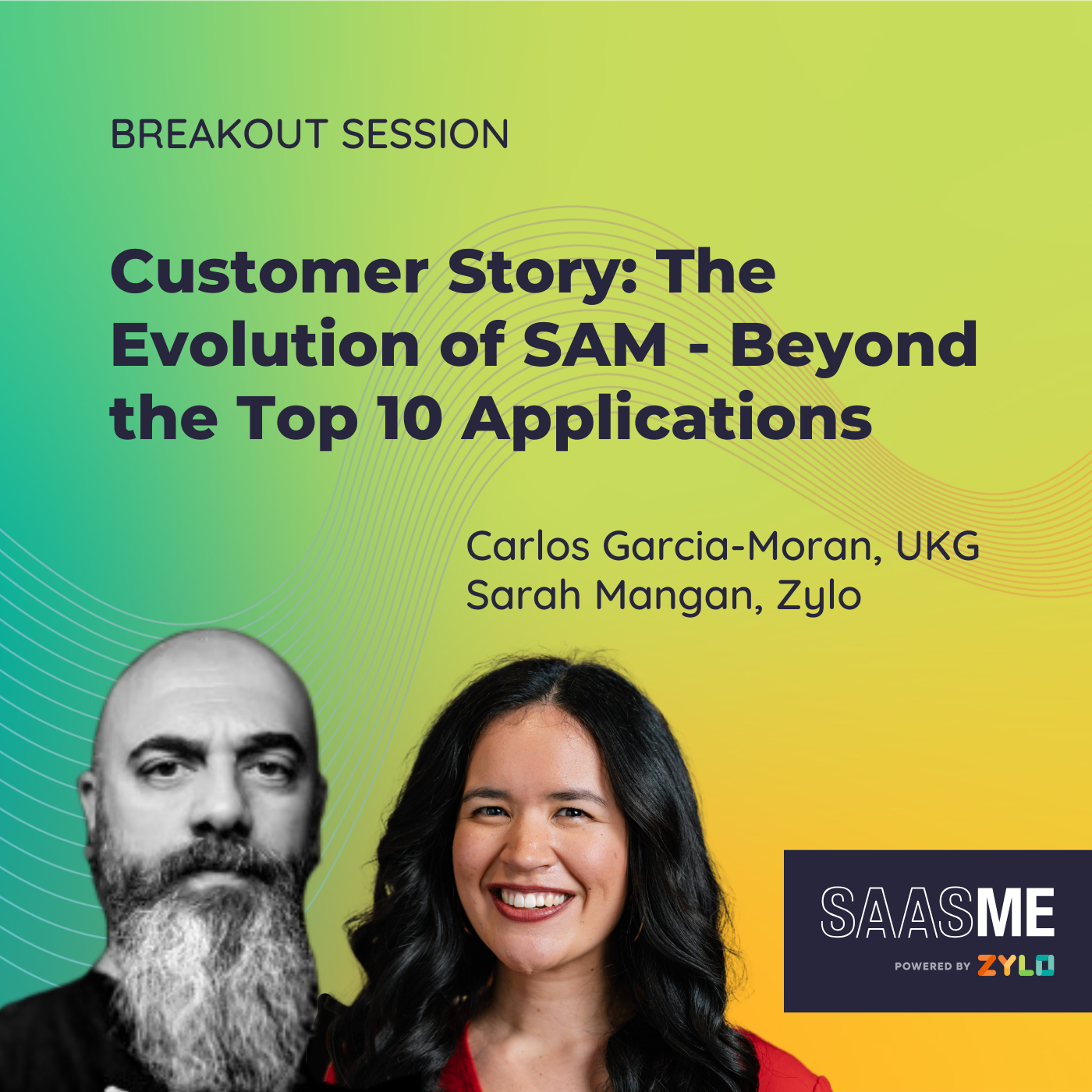Follow the Money: Why Financial Discovery for SaaS Reigns Supreme
- 0.5
- 1
- 1.25
- 1.5
- 1.75
- 2
Rina Steinberg: Hi everyone. Thanks so much for joining us today. My name is Rina Steinberg. I'm a SaaS consultant here at Zylo and I work closely with Jon and the team at Momentive. While there are many ways to uncover SaaS applications, no method is as comprehensive as financial discovery. Using financial and spend data as a guiding force, Jon and his team at Momentive were able to create deep visibility across Momentive's entire SaaS stack, enabling them to take a keen look at and reduce spend across their SaaS stack in many different ways. I'm so excited for you all to learn about his experience. If you have any questions, please throw them in the chat and Jon will get to them at the end if there's time. Once again, thank you for joining us. And Jon, please take us away.
Jon Alves: Hey, thanks Rina. Thanks for really teeing that one up. Welcome SaaSMe attendees. I'm Jon Alves. I'm from Momentive, makers of SurveyMonkey. I've been with SurveyMonkey, Momentive for four years. I started as a technology category manager and now lead our strategic sourcing team on which we have two technology category managers, one supporting G&A software and the other, production services and engineering. We do this in partnership with the Zylo SaaS negotiators. And if category manager is a new title to you, we're part of the procurement function in the finance department. This technology team supports all technology and SaaS across our organization, so from POC to enterprise platform and everything in between. In partnership with our business owners, we've helped shape our tech stack in alignment with our company's objectives and values. We've been on this journey for a few years now, so I'm going to start by going backward to our humble beginnings because it'll give you some context on why we feel financial discovery for SaaS is crucial. Our first foray into SaaS management probably isn't too dissimilar to many of you. We pulled down PO data from a set period of time and created a sheet we just called the contract funnel. This is a one- time export, became a living sheet, and we then started updating with all our deal notes, renewal dates and everything else. And if you didn't see what you were looking for, you could always add a new column. It wasn't quite a free for all, but there was no automation and each category manager updated their own deals. If we had extra time after updating the sheet, we'd use manual filters and sorting to figure out what our renewal pipeline actually looked like. Usually this was just in time and rarely gave us enough runway to have a true impact on the deal. And the filters and sorting were not easily saved or recreated, so the views could be different each time depending on what data you had selected. That was getting even more challenging because our cloud transformation project had us onboarding new suppliers every month. As we juggled the team's renewals and terminations of sunsetting solutions, we felt like we were either all in on new solutions or renewals. It was difficult to strike a good balance between them. We were able to recognize that this was due to our inability to have a constant and clear view of our upcoming renewals. We were also tasked with incorporating a recent acquisition into our growing tech stack. Many of their solutions overlapping with our existing ones, so we were timing contract end dates to ensure we aren't carrying multiple contracts for the same supplier, and getting users into our enterprise systems, while also taking advantage of the growth as best we could. And as a startup, they also had a significant amount of expensed apps. So we had to put each one of those through our own process to determine their fate and to document that for later. We knew that this contract funnel wasn't scalable and required too much manual effort to maintain. We also knew that it wasn't giving us a clear picture into all of our applications because PO and AP, that alone is supplier centric. There were plenty of solutions sold through resellers that we needed to review each line in detail in the contract funnel to figure out who the underlying supplier or app was. We were already in a hole and we hadn't even cracked into our own expensed spend. This was another set of services across the company that we had no visibility into unless we're being engaged by a user. And we all know that's uncommon unless it's like a department P- card holder. This doesn't leave us with many options on where to go from here. We knew there was a more effective and efficient way of doing this, and what we did next really isn't a mystery or I wouldn't be here today. We invested in SaaS management, a platform and a program. The Zylo selection was based on their approach to SaaS discovery through financial data. It already aligned with how we were attempting to do this on our own. By aggregating our paid software into the platform, it became our single source of truth for SaaS. At the heart of financial discovery is assigning values to applications, not just suppliers. Application-specific spend will create the full picture of your tech stack, not just who you're buying software from, like resellers or marketplaces, it's about the individual applications. Zylo's enrichment of that data with categories and function enables you to create the blueprint for action. In addition to that, we can add custom fields, multiple contracts, tags and notes and documents to create a full application record. Combining the usage data and the financial data, you're able to see where you're getting value out of your tools and where there's room for improvement. I also feel like this was a jumping off point for more valuable insights like ROI. However, starting with logins helps a great deal if applications are siloed in individual business units. With all this goodness that the financial discovery and the Zylo platform has brought to the surface, our team was able to redirect their efforts away from updating columns and mining sheets for nuggets of info into taking decisive actions and getting results. We were able to dive into the data and start pulling together savings opportunities, renewal strategies that require enough runway to scope out what other alternative options there might be, and maximize our current investments, and avoid unnecessarily adding licenses when adoption is low. The first change we saw was from a reactive to a proactive posture. We enabled strategic category management and we were planning in advance for renewals and prioritizing new solutions appropriately. The key outcome here was facilitating the renewal diligence. We had one place to go to gather a majority of the details needed to proactively engage with the requester upon renewal, historical spend, usage, contracts, notes, et cetera. Typically, this kind of diligence required reports and a search through shared drives and even some inboxes. Instead, we were going into Zylo and getting the data that we're confident in. So we're going into those renewal discussions or any monthly leadership syncs, and for prepping for annual portfolio reviews, informed and empowered. And having this data available to us has allowed us to build better relationships with stakeholders, business partners and executives, and really become subject matter experts on our tech stack. And how do you know if you're really a subject matter on your tech stack? Well, you know all the applications that make up your tail. Because there's always a tail, you just aren't sure how long it is. We were also able to address our expensed applications. With better visibility into our solutions, we were able to reduce our total number of applications through consolidation of expensed apps into standard solution, and termination of unutilized legacy apps. Expense software by its nature, will always be reactive unless you maybe use some more extreme measures like blocking merchant codes on P- cards or blocking websites with IT security tools. We use data discovery to make some policy and process improvements, put some governance in place to give requesters a path to have a dialogue on how they can get the solutions they need. And now that we're working with our tech spend proactively, we can really get into unlocking responsible growth. This is centered around the concept of ongoing optimization. This cycle can be modified to match where you are in your company's journey. For Momentive, we've been through growth and now we've shifted towards a responsible spending. This is one cycle that we're going through on a regular cadence at different time intervals. So monthly, quarterly, or annually to surface savings opportunities. And in this particular example can be, I think, changed somewhat. I think for this particular session, I focused on one cycle that we use, and that starts with identifying redundancies through enriched data application. This gives us insights into which solutions are consolidation or termination candidates. It starts to fuel the rationalization for standardizing and centralizing on our preferred applications. This is our decision- making phase where we're able to figure out how we want to proceed, and then we'll start engaging with our partners on leveraging economies of scale to deliver results. So at risk of oversimplifying the ongoing optimization, this is really about planning, decision- making and execution. I think you can insert any different tools into these places depending on what it is that you're trying to achieve. This brings me to my key takeaways for financial discovery for SaaS. It allows you to align your technology category management strategy with your company's objectives, regardless of whether your business is growing, contracting, or maintaining. With a focus on the financial discovery, you'll be ready to pivot with your business. Because you're able to pivot, you can always rationalize your effort and resource allocation to deliver results. And as you find opportunities in SaaS spend, you have the financial data to propose persuasive and data driven options that will have an impact. Put this into action, consider consolidating five applications with a $10, 000 annual contract value each or one$50,000 ACV tool. They'll both yield the same results, but to do one or five might be a much greater effort. So you can prioritize them accordingly. Lastly, there's nothing more satisfying than getting results, so measure that impact and share it with your business partners. This is probably the most exciting part about getting savings and completing the financial discovery for SaaS. I think I went really fast for this session, so I hope there was some questions for everyone, and I'd love to address those. But thanks for joining my session on Financial Discovery for SaaS.
DESCRIPTION
Want to bring shadow IT out of the dark? Or discover ALL the SaaS applications in use throughout your business? While there are many ways to uncover SaaS applications, no method is as comprehensive as financial discovery. In this session, you’ll learn about the downfalls of other discovery approaches and how to best leverage the metadata and forensic detail that’s uncovered in financial discovery.

